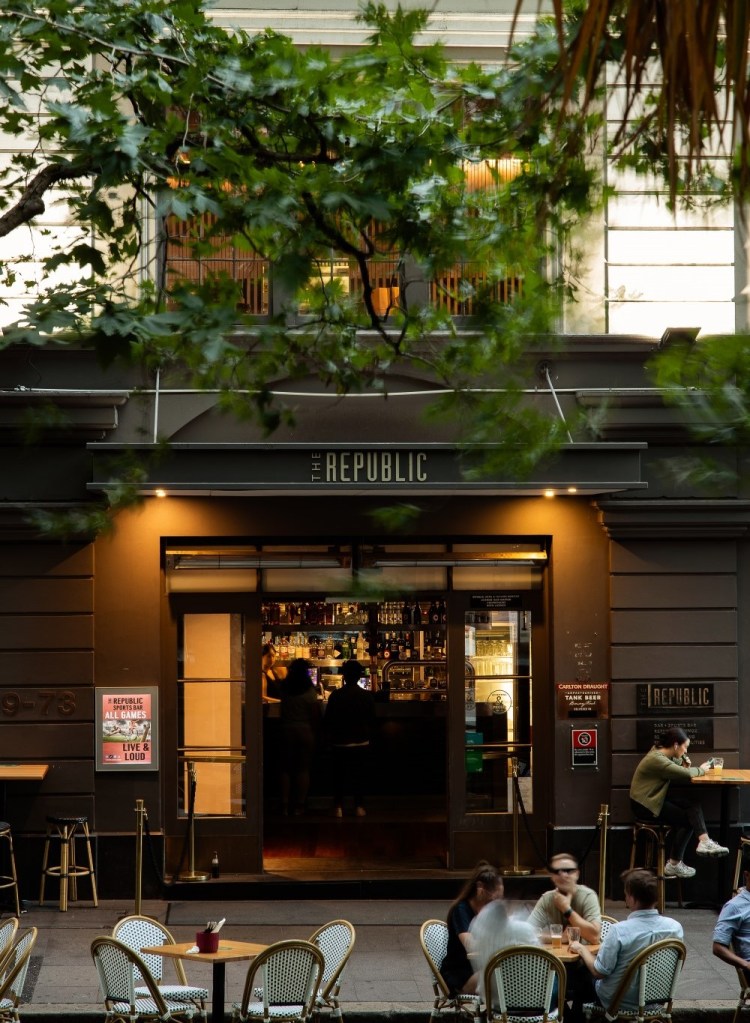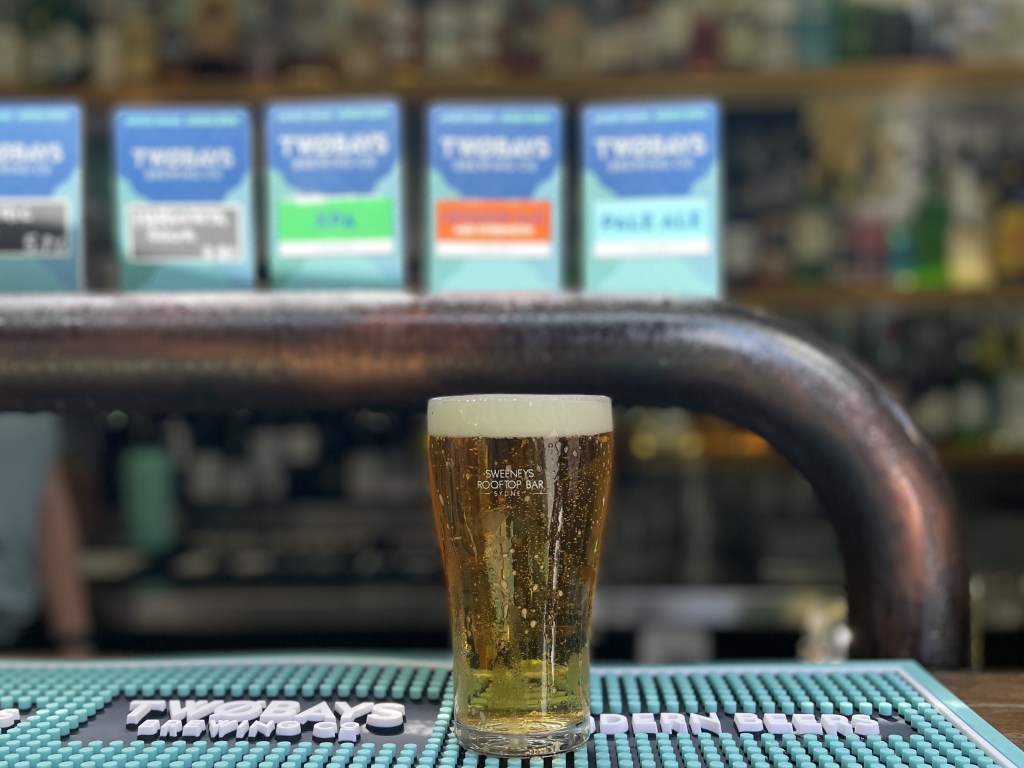Today, as consumers become increasingly conscious of their health and lifestyle choices, a shift in preferences has given rise to growing demand for better-for-you alternatives to traditional products, and the on-premise is no exception.
This behaviour is representative of a broader cultural phenomenon that leans into health and wellbeing, and publicans are embracing the trend by diversifying their offering with beverages that cater to dietary preferences and wellness goals.
A driving force for this trend is the recognition of diverse consumer needs, with better-for-you beverages encompassing a spectrum of products including gluten-free, low-sugar, low-carb and no- and low-alcohol.
On one hand, the Global Data Top Trends in Alcoholic Beverages 2023 report cited health and wellness as an influential factor in alcohol purchasing decisions. But for many, these products offer more than a healthier alternative, they can sometimes be the only option that doesn’t exclude consumers with dietary requirements, allergies, or an intolerance.
According to the Australian Medical Journal, 25 per cent of Australians now avoid gluten (made up of 11 per cent total avoidance and 14 per cent opting in and out), and that number is closer to 40 per cent for millennial and Gen Z consumers.
TWØBAYS Brewing Co founder and CEO Richard Jeffares, who himself was diagnosed with coeliac disease in 2015, says: “Consumers are more in tune with their bodies than ever before. They are more aware of how certain foods or ingredients affect them, even if they’ve not had a medical diagnosis for an allergy or intolerance.”
Redefining drink menus
While beer has traditionally offered these alternatives, it isn’t always the right drink for the occasion or to the consumer’s taste, and as a result, consumers are seeking innovation.
From his own observations of the industry, James Russell, beverage manager for Virtical Group which owns the Republic Hotel in Sydney, says patrons have come to expect better-for-you beverage choices in every category.

“For a long time, there has been mid-strength and low-carb beer options readily available in Australia, it’s been a part of our drinking culture for over a decade on draught. You’ve got Hahn SuperDry, Great Northern Super Crisp and Pure Blonde, all of these products are low-carb or mid-strength variations and they’re huge sellers.
“Having low-alcohol and low-sugar cocktails on a menu readily available is pretty standard now, and there has also been a huge push for RTDs to be readily available on draught as well as in cans, and that includes non-alcoholic options,” he added.
And within those categories, Nathan Alfrey, marketing manager at TWØBAYS Brewing Co, says consumers are looking for variety.
“There’s no reason for any venue not to have at least one gluten-free beer in the fridge or on tap, but like barley beer drinkers, gluten-free consumers probably don’t want to sit on the same beer all night.
“Consumers expect a choice. You would struggle to find a venue these days that doesn’t have at least a few gluten-free food options on the menu, so publicans already understand there is a market there and consumers will come if you give them enticing options.”
As better-for-you beverages establish their share of space in the pub market, Fabrizio Culici, general manager of The Royal Leichhardt, explains that these beverages initially attracted a more health-conscious, higher income patron, but increased availability has driven a demographic shift.
“As societal health trends have become more dominant, and better quality and variety of better-for-you options become available, as well as being able to sell at a lower price, more patrons are starting to consume better-for-you beverages across the board. Not just those who value health, natural ingredients and sustainability aspects of the products.
“Over time, better-for-you beverages are transitioning from niche to mainstream,” added Culici.
Pouring potential
In many instances, these consumers are often key decision makers within their groups when it comes to choosing a venue. Gluten-free consumers are a great example of this, and Alfrey says those who cater to these needs are reaping the benefits.
“Our most successful customers are the ones that have really leaned into catering for the gluten-free community. And it is a community. These consumers talk, they seek out new venues, and they shout from the rooftops if they find a place that caters for them and gives a great on-premise experience.”
According to Alfrey, publicans shouldn’t ignore the needs of their health-conscious consumers or those with specific dietary needs, so, how are publicans successfully integrating better-for-you beverages into their existing offering?
Culici advises pub operators to seize opportunities by offering a diverse selection of healthier options in addition to, rather than replacing, their offering; an approach that has been adopted by W. Short Hospitality not only in The Royal Leichhardt, but also in The Australian Heritage Hotel, its second pub venue.
“We’ve noticed a shift among beer drinkers towards healthier options. At both venues we’ve adapted by expanding our beverage menu to include craft beers with lower alcohol content, gluten-free options, and non-alcoholic beers.
“The Aussie has been able to offer a much larger range of these options purely as that their key patronage are craft beer drinkers.”
When it comes to cocktail programs, Russell recommends including a selection of healthier alternatives from the get-go, rather than making changes as requested, so that they are enjoyed by consumers as intended and don’t require staff to make improvisations.
“In particular cocktail families you need the sugar to balance the drink, it puts weight on the palate and compensates for the sour and bittersweet elements. One way of approaching this in pubs is to push simple classics like the Tommy’s Margarita which uses agave syrup and contains less glucose and a lower GI than sugar.”
Alternatively, for pubs with minimal cocktail menus, Russell suggests simple three-ingredient build cocktails that cater to better-for-you consumers and can be created with very little training.
“Every single one of my cocktail lists always has no- and low-alcohol options, often a Spritz, because it’s a dry, fresh cocktail that suits the Australian palate, and it’s easy to have those options already integrated without consumers having to ask for them,” he added.

Expanding your offering might be the first step in satisfying these preferences, but after many years of not being catered for, consumers are often unaware of the options available to them as they do arise, and communicating that offering holds just as much weight.
Once patrons are through the door, the easiest way of letting them know about your better-for-you beverage offering is to integrate it into the same menu as traditional drinks.
“If it’s in the fridge but not on any drinks menu, then the consumer may not see it, or ask whether you offer one,” says Alfrey.
“As more and more venues offer [better-for-you beverages], consumers are getting better at asking for them, but after many years of not being able to find any in hotels and pubs around the country, there is still the assumption that there won’t be one available.
“You have the opportunity to delight these consumers and make them feel as included as every other consumer you welcome into your venue,” he added.
Sustained demand for better-for-you beverages means the on-premise is well positioned to encourage exploration and trialing, and publicans who are embracing the trend of health-conscious drinking are at the forefront of an evolving market.
“In the on-premise market, better-for-you beverages are likely to continue growing in popularity and availability, which should mean a win-win for operators as prices continue to normalise and stigmas around products continue to disappear, making them easier to sell,” concluded Culici.
Breaking barriers
One of the biggest challenges publicans face in expanding their better-for-you offering is the stigma that surrounds these products, and the idea that they compromise on taste. Based on his experience, Culici suggests that communication and trialing are the best ways to combat negative misconceptions.
“Some stigmas do exist around better-for-you beverages, like perceptions of bland or bad taste, or that of being associated with high income or elitism, particularly in a ‘locals pub’ type venue,” he says.
“Our staff will often offer a taste of new better-for-you beverages that are introduced to try dispel patrons of their beliefs as well as providing information on ingredients and possible health benefits.”
Despite these challenges, pubs are generally seeing a positive response to better-for-you beverages and a willingness among consumers to trial new products.
“There’s still a perception out there among the uninitiated that gluten-free beer doesn’t taste as good as barley beer, but the rate of sale says otherwise,” added Alfrey.
“We see it at tap points all across the country. When TWØBAYS goes on tap, it sells through at the same rate as any other craft beer keg.”
This piece was first published in the May issue of Australian Hotelier, which you can view below.

